![]()
After Jamie Oleksiak was traded back to the Dallas Stars on Monday, it was apparent there was something more significant in the works for the Pittsburgh Penguins. Those suspicions were confirmed on Friday afternoon as the Penguins sent Derick Brassard, Riley Sheahan, a second-round pick and two fourth-round picks in this year’s draft to the Florida Panthers in exchange for Nick Bjugstad and Jared McCann.
It’s clear the Penguins are going all-in for their remaining championship window while the Panthers are bowing out of contention this season in hopes of building something more prominent in the future. So did each team get precisely what they needed?
Instant Analysis of the Trade
Most expected the Penguins to take a run at the bigger names like Kevin Hayes, Matt Duchene or Brayden Schenn, but with everything coming from general manager Jim Rutherford’s mouth post-trade, it sounds like the Penguins got the guys they wanted all along.
At 6-foot-6, Bjugstad is a big, powerful scoring forward who’ll slot in as the Penguins’ new third-line center and hopefully bring the stability they’ve missed since Nick Bonino departed in 2017, but he could shift to the wing if there’s a better fit there. He’s struggled with health and on-ice performance this season with 12 points in 32 games, but had a 49-point season in 2017-18, and a change of scenery could be what he needs to get back on track. The 19th overall pick of the 2010 Draft, has 191 points (87 goals, 104 assists) in 394 career games and is under contract through the 2020-21 season at a cap hit of $4.1 million.
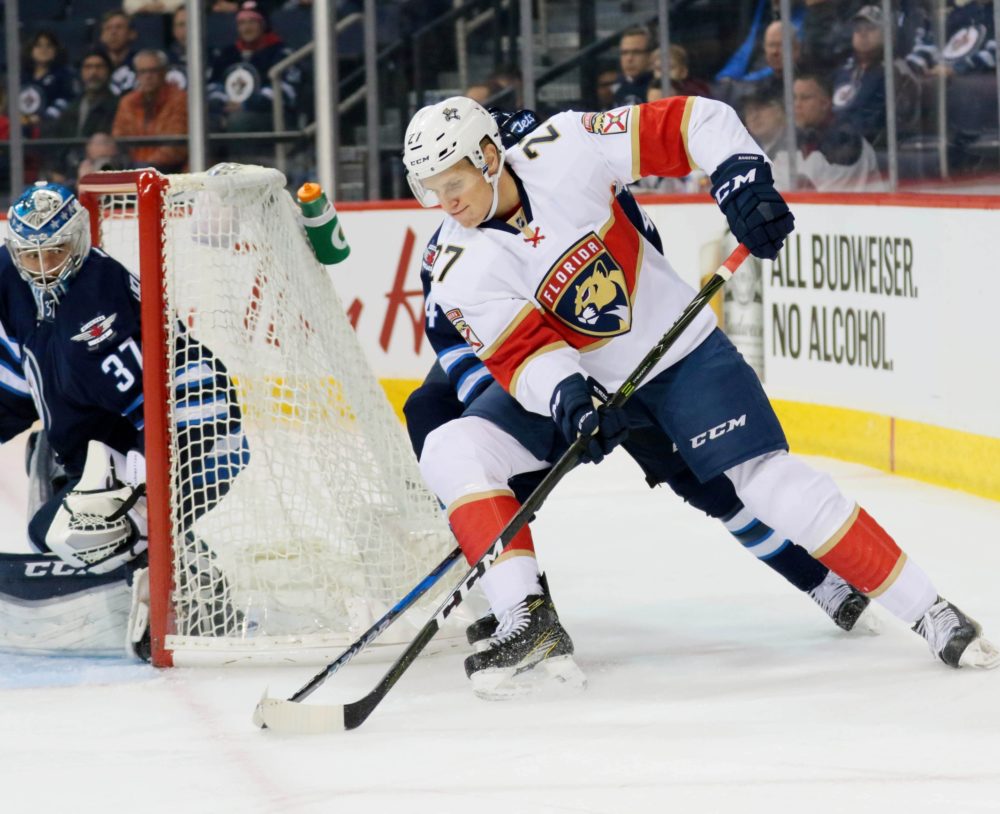
McCann may be the most intriguing piece of this deal. At 22, he’s younger than a typical Penguins acquisition, but he’s already proven to be an everyday NHLer. McCann, who has 18 points in 46 games this season, is a speedy two-way forward who can play an important role whether or not the puck’s on his stick. He’s signed through next season at a cap hit of $1.25 million but isn’t eligible to become an unrestricted free agent (UFA) until the conclusion of the 2022-23 season.
He’ll likely begin his time with the Penguins on the fourth line, but McCann can play in the top-nine if the need arises; which Rutherford believes makes the Penguins the deepest they’ve been all season.
“It gives us guys who can play in the top-nine, in Nick’s case, the top-six,” Rutherford said Friday. “It makes our top-12 stronger. Now we have guys who will play on our fourth line that can move up into the top-nine on any given night. We have more balance in our forwards than we’ve had all year.”
Brassard being moved is hardly a surprise. The writing was on the wall for quite some time as he struggled to find his confidence and game since being acquired from the Ottawa Senators on Feb. 23, 2018, posting just 23 points in his 54-game Penguin career. In 40 games this season, he had 15 points and routinely looked slow and uncomfortable when he was on the ice.
He was also, by far, the Penguins’ worst player according to goals above replacement (GAR) with a minus-8.4 GAR mark. It’s a disappointing end for him. It looked like one of the best trades of Rutherford’s managerial career when Brassard was acquired, but it turned out to be a bust.
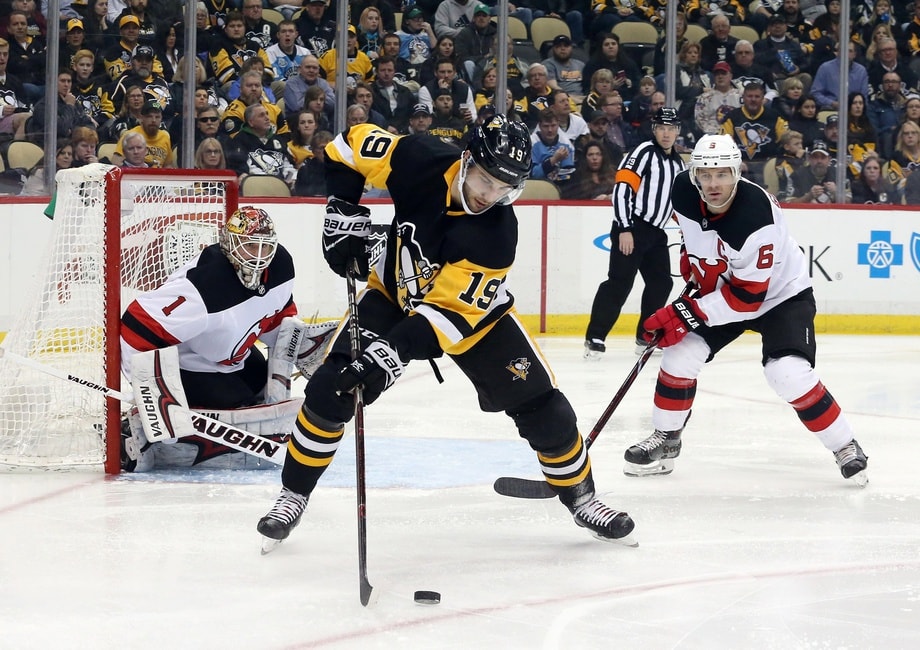
Sheahan, another player who was acquired last season, albeit for much less and with much lower expectations, was also shipped off to the sunshine state on Friday afternoon. He served as the Penguins’ third-line center for a majority of the 2017-18 season, putting up 32 points in 73 games after being acquired on Oct. 21, 2017 for Scott Wilson and a third-round draft pick in the 2018 Draft.
The offensive production wasn’t expected to last after moving back to the fourth line this season, and it didn’t, as Sheahan put up nine points in 49 games before the trade. He was a valuable penalty killer, and while he did take on some tough deployments, he wasn’t a unique piece on the fourth line.
Sheahan’s minus-2.7 GAR was still significantly better than Brassard’s minus-8.4 mark, it was still the second-worst number on the team. Essentially, Bjugstad and McCann can continue their current level of play (minus-0.2 GAR and 1.8 GAR, respectively) and still bring more value to the Penguins on a nightly basis.
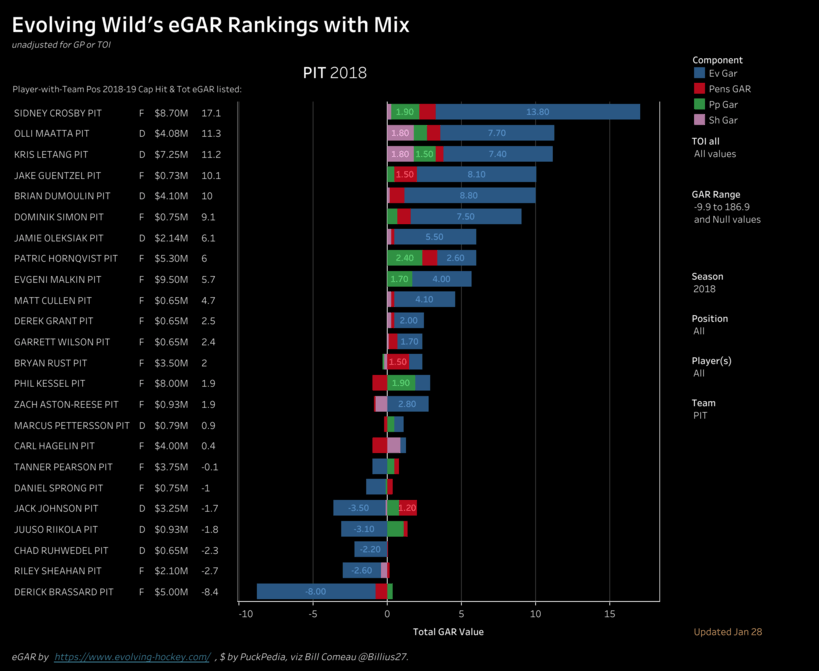
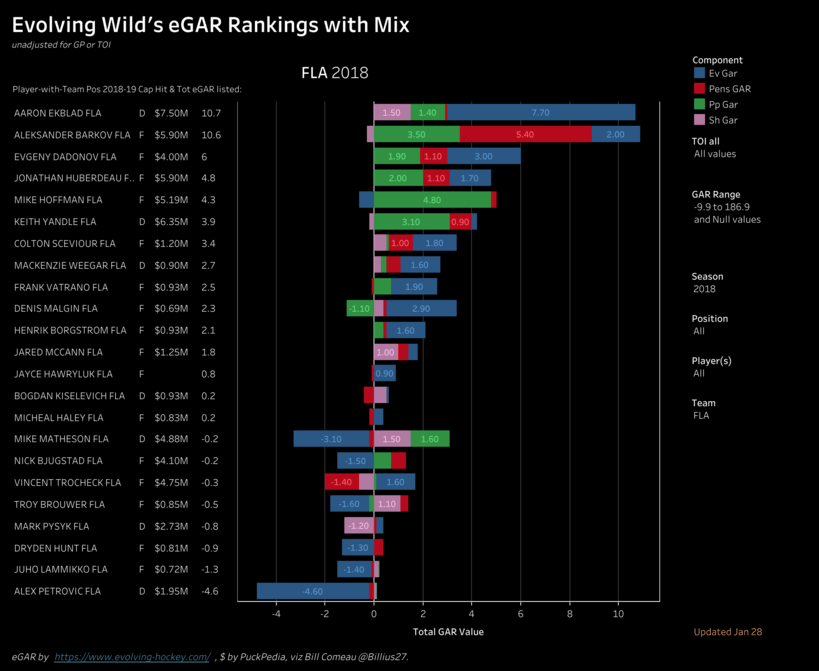
The Penguins are getting younger and better with this trade. It’s not going to make them a juggernaut, but it does make them slightly better, and on a team with as much talent as the Penguins, that may be all they need to get back to find their championship groove.
The Penguins Are All-In Until the Wheels Fall Off
Traditionally, the Penguins have gone after older rental players in their pursuit of championships, but both of Rutherford’s big trades this season have gone away from the “rental” philosophy.
In November, the Penguins traded Carl Hagelin (a 30-year-old pending UFA) to the Los Angeles Kings for Tanner Pearson (26 years old, signed through 2020-21), and today they acquired Bjugstad (26 years old, signed through 2020-21) and McCann (22 years old, signed through 2019-20 but under team control through 2022-23) while shipping out a 31-year-old Brassard and 27-year-old Sheahan, both of whom are pending free agents.
Related: Rutherford Casts Himself as Both Buyer and Seller at the Deadline
Nobody’s ever accused Rutherford of being afraid to make a risky move, but taking on the additional term and money in trades shows the Penguins are trying to build a secondary group that sticks together during the latter part of Sidney Crosby, Evgeni Malkin, Phil Kessel and Kris Letang’s careers. It seems to be working so far as the Penguins have 17 players under team control through the 2020-21 season (13 contracts, four RFAs).
This really shouldn’t come as a surprise, though. Trading draft picks and prospects will still be a common theme for the next few seasons, as will be adding impact players. The Penguins aren’t likely to have players like Crosby and Malkin again, and any season without a championship from here on out makes it increasingly unlikely they hoist a fourth Stanley Cup before calling it a career. Considering how many teams have still never won a cup, winning three with the same group of players is a tremendous feat, but the Penguins aren’t going to let the chance for a fourth go to waste.

The Penguins have some prospects who could turn out to be decent NHLers one day like Filip Hållander, Calen Addison, Justin Almeida, Jan Drogz and Kasper Björkqvist, but they’re not guys you build a team around, and they’ll be traded if Rutherford sees a chance to further upgrade his NHL roster.
The same goes for draft picks. Unless the Penguins collapse entirely, they won’t have a top draft pick anytime soon and no mid-round pick within the next three years is going to help the team when they need it, so everything should be on the table. The Penguins will worry about their rebuilding phase when they get there, but for now, they’re all-in on Stanley Cup number six.
Panthers Acquire Important Cap Space & Draft Capital
For the Panthers, who sit 11 points out of a playoff spot, the most crucial part of this deal was securing multiple draft picks and future cap space. Acquiring two expiring contracts in Brassard and Sheahan gives them an opportunity to make further moves before the Feb. 25 trade deadline.
It’s expected, per TSN’s Pierre LeBrun, that the Panthers are going to take a run at current Columbus Blue Jackets Artemi Panarin and Sergei Bobrovsky when they become free agents on July 1, if not sooner. With yesterday’s trade, and the expected $3.5 million increase to the 2019-20 salary cap, the Panthers are projected to have just over $24.5 million in cap space to use on nine roster spots.
That number could potentially rise to over $29 million if soon-to-be 40-year-old Roberto Luongo retires in the offseason. With only two notable potential free agents (Mike Hoffman and Evgeni Dadonov) over the next three offseasons, the Panthers are in a position where they can make a run at both Panarin and Bobrovsky and remain in a comfortable cap position.
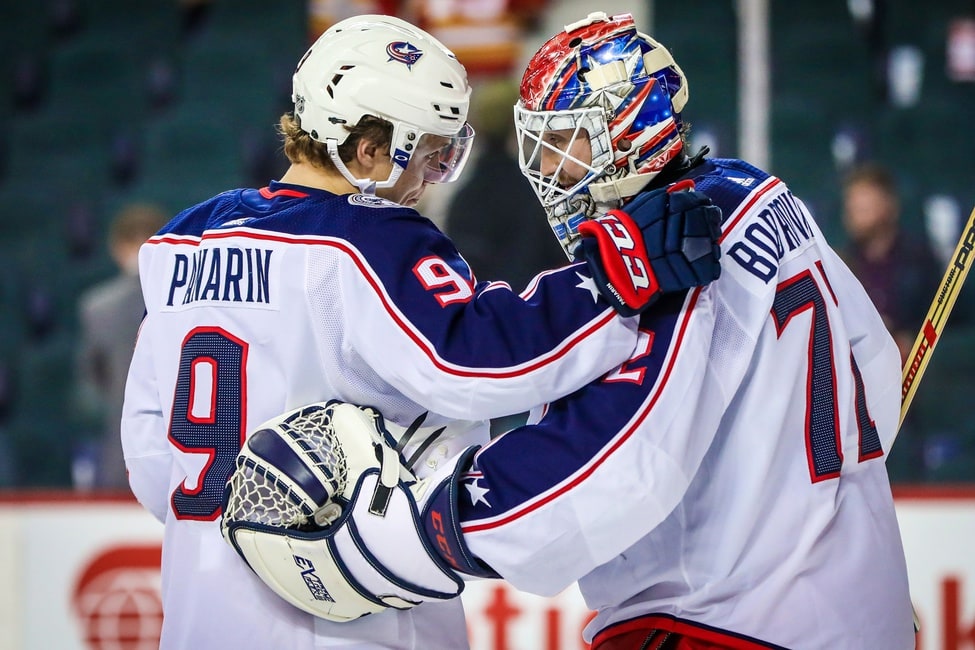
With a young core led by Alexsander Barkov, Jonathan Huberdeau, Vincent Trochek and Aaron Ekblad, the Panthers have often been just a solid veteran or two away from contention, and adding one, or both, of Panarin and Bobrovsky would go a long way in making them a threat in the Eastern Conference.
Panarin, who has 57 points in 48 games this season, would form a formidable trio with Barkov and Evgeny Dadonov on the Panthers’ top line, while Bobrovsky, who’s struggled to a .901 save percentage (SV%) in 36 games this season amid drama with the organization, would replace the potentially retired Luongo and become the number one goalie.
Even if they come up short on their first two options, the 2019 free agent class is one of the better ones in recent memory with players such as Matt Duchene, Mark Stone, Erik Karlsson, Joe Pavelski, Jeff Skinner, Jordan Eberle, Semyon Varlamov, Jake Gardiner, Mats Zuccarello and Gustav Nyqvist scheduled to hit the market this summer. With cash to spend, it’d be shocking if at least one of those players aren’t wearing a Panthers jersey in October.
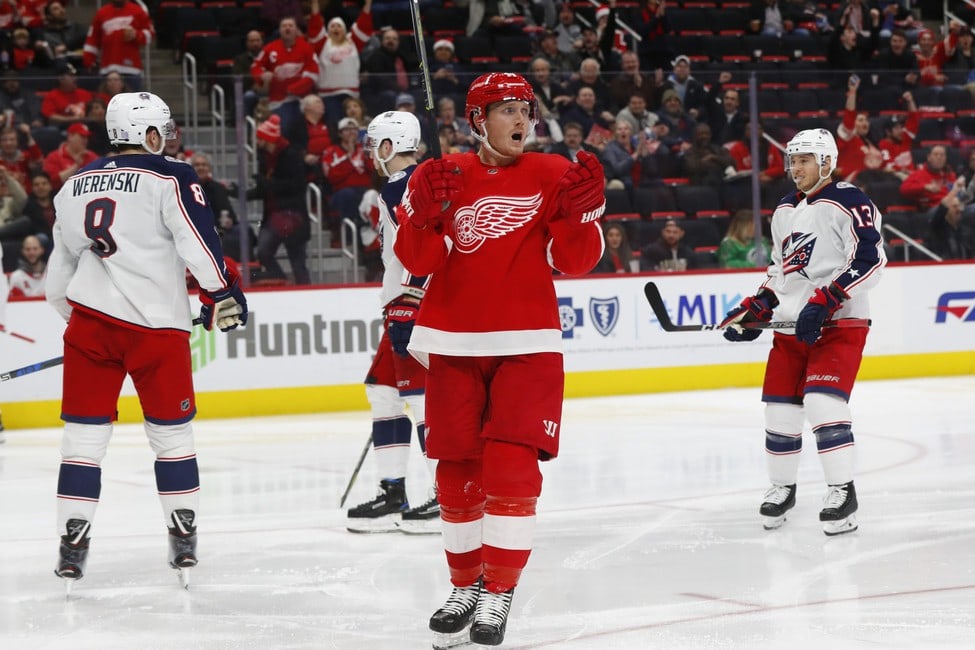
Now for the other important part of this trade for the Panthers: draft picks. For a team that doesn’t always attract the elite players, succeeding in the entry draft is vital, and the Panthers have done that over the last decade. We all know about their first rounders like Owen Tippett, Henrik Borgstrom, Barkov, Huberdeau and Ekblad, but the Panthers have had a lot of success outside of the top round, too. They’ve selected the following notable players or prospects outside the first round since 2009:
- Vincent Trochek, 3rd round (64th overall) in 2011
- MacKenzie Weegar, 7th round (206th overall) in 2013
- Jayce Hawryluk, 2nd round (32nd overall) in 2014
- Dennis Malgin, 4th round (102nd overall) in 2015
- Aleksi Heponiemi, 2nd round (40th overall) in 2017
- Max Gildon, 3rd round (66th overall) in 2017
- Serron Noel, 2nd round (34th overall) in 2018
If it isn’t obvious already, there’s a reason why getting three picks is a win for the front office and scouting staff. It also gives the Panthers nine picks in the 2019 Draft, which could help them in a trade if they decide to go that route. Having multiple options is the best thing an NHL team can have, and the Panthers now have plenty of them as they look towards becoming a real contender.
It’s a win-win for everybody involved in Friday’s transaction. For the Penguins, they get two players who’ll have an impact now and in the long-term, while the Panthers grab more draft picks to build their system and clear cap space in anticipation of a big summer.